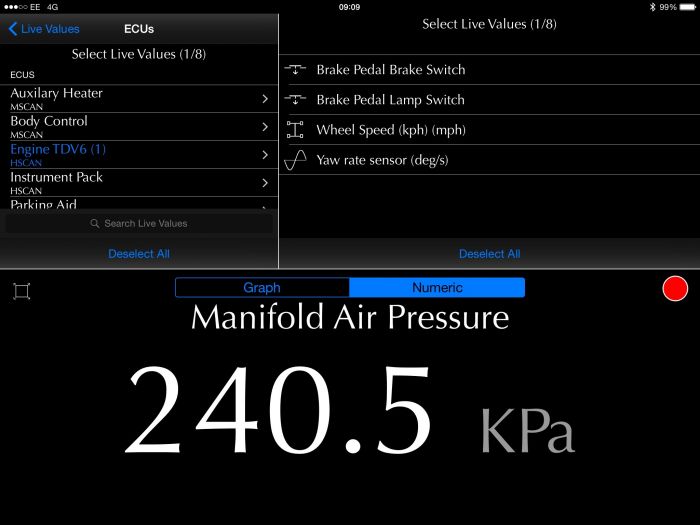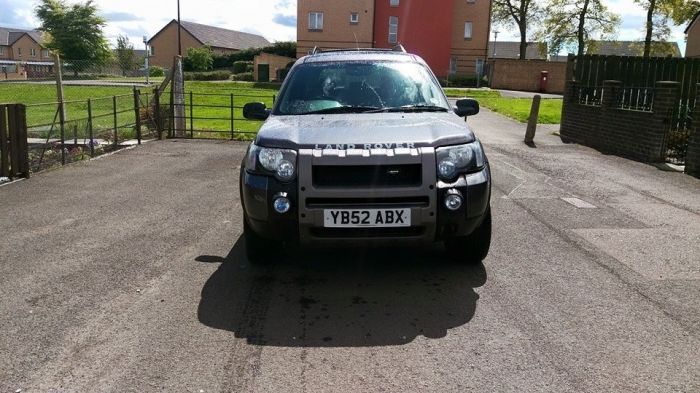 | Home > Technical (L322) > TDV8 Turbos |
 
|
|
|
| Ivor Member Since: 26 Jun 2015 Location: Aberdeen Posts: 223  
|
I make you right about the heat build up ,no one has posted how much boost the ff runs or a turbo graph ,I run a 400bjp Nissan skyline and that runs at 1.2bar the maximum output for this turbo is 420bhp so it's running at nearly the max and produces a lot of heat when I give the heavy right foot and I have always eased up in the last few miles to home and never had an issue with it, I don't tend to drive in sport and watching the revs for each gear change I can't see it being highly stressing on the turbos |
||
|
| Mikey Member Since: 10 Jan 2008 Location: Dundee Posts: 1750 
|
1.2 bar? That's cute
May I suggest that is why turbo failure is so common? I was even more curious about this after reading that article, so I graphed my temps with the IID On the motorway, with lots of airflow, the engine oil temp was sitting around 87-88 degrees. Leaving the motorway, and 2 miles of gentle town driving, the temperature actually increased to 93 degrees After 60 seconds of idling, the temps actually increased to 95 degrees, and gradually reduced to 85 degrees after almost exactly 10 minutes... But these temperatures mean It's much easier to prove my point on a car with a DPF, as these have EGT sensors fitted into the exhaust. On an engine that is run upto temperature, and idling, you will see a temperature of around 150-170 degrees. Whilst driving on the motorway, you will see somewhere around 270-300 degrees Under full throttle, they climb to in excess of 500 degrees. But the hottest part will always be where it exits the engine (at the manifold) then passes through the turbo, and then into the downpipe, so the temperatures at the turbo housing will be higher than these seen by the sensors... It is the heatsoak in the manifolds and turbo housings that vapourize the oil While this is an extreme case, and a petrol engine, and I dont expect a TDV8 will ever get this hot, but the theory is the same:
Manifold is cooking hot, turbo is cooking hot, then it begins to cool from the downpipe back. The EGT's will always be higher is the turbo and manifolds, than the sensors downstream can monitor By allowing the turbo's to cool down, you get rid of any excess heat, and the turbo slows down, minimizing how long it spins without any oil flow, and prevent heatsoak |
||||||||
|
| ajac8 Member Since: 04 Oct 2011 Location: Shakespeares County Posts: 1653  
|
Great post Mikey - very informative. |
||
|
| Mikey Member Since: 10 Jan 2008 Location: Dundee Posts: 1750 
|
Should really put some new batteries in my IR Thermometer, and take some readings... |
||
|
| rar110 Member Since: 09 Aug 2014 Location: Brisbane, Australia Posts: 1119  
|
Are the 3.6 turbos water cooled? Probably not given the exhaust is divided between two turbos.
|
||
|
| alanm_3 Member Since: 19 Feb 2011 Location: my House, unless Iâm not at home, in which case Iâm somewhere else. Posts: 6721  
|
I believe they're oil cooled. Got - 2017 SDV8 Autobiography in Loire Blue
|
||
|
| Mikey Member Since: 10 Jan 2008 Location: Dundee Posts: 1750 
|
The turbo's are oil cooled.
|
||
|
| Baben Member Since: 17 Oct 2010 Location: Kyalami Posts: 165  
|
Last year when we renewed both turbos I fitted EGT probes to each manifold of the wife's RRS TDV8. Probes are fitted in the manifolds (which are ceramically coated inside and out) before the turbo.
|
||
|
| Mikey Member Since: 10 Jan 2008 Location: Dundee Posts: 1750 
|
In light of these actual EGT readings, it seems prudent to quote myself from the previous page, just to remind ourselves...
|
||
|
| Baben Member Since: 17 Oct 2010 Location: Kyalami Posts: 165  
|
I have reason to believe the coated manifolds make the readings slightly higher though. I saw the same in my D2 TD5 where I ceramically coated the manifold too.
|
||
|
| Mikey Member Since: 10 Jan 2008 Location: Dundee Posts: 1750 
|
I was led to believe the very same. The ceramic coating does not let as much heat "soak" into the cast manifold/turbo casings |
||
|
| rar110 Member Since: 09 Aug 2014 Location: Brisbane, Australia Posts: 1119  
|
Thanks for some real world data. Very interesting top end EGTs, cooling rates and impact of changes.
|
||
|
| Cam-Tech-Craig Member Since: 03 Aug 2011 Location: Gloucestershire Posts: 16280  
|
Nonsense! As that info states the temps take upto 15secs to reach acceptable levels after a 160kph fast run! It takes longer than 15secs to drive up most slip roads exiting motorways! Therefore negating the need to rest turbos on modern diesels. |
||
|
| Baben Member Since: 17 Oct 2010 Location: Kyalami Posts: 165  
|
My EGR's are blanked off. Fitted my own design huge intercooler. EGT alarms are available. Its just a pain to lift the body to fit an EGT probe |
||
|
 
|
|
| All times are GMT |
< Previous Topic | Next Topic > |
Posting Rules
|
Site Copyright © 2006-2024 Futuranet Ltd & Martin Lewis
![]()



